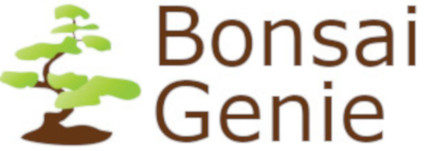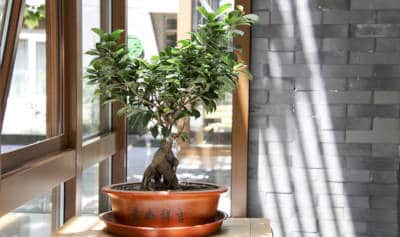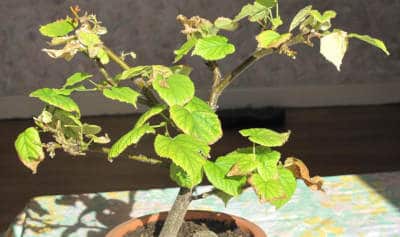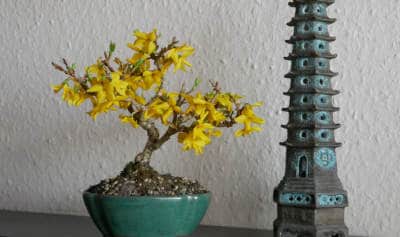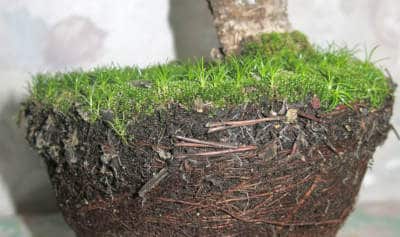What Should You Feed a Bonsai Tree?
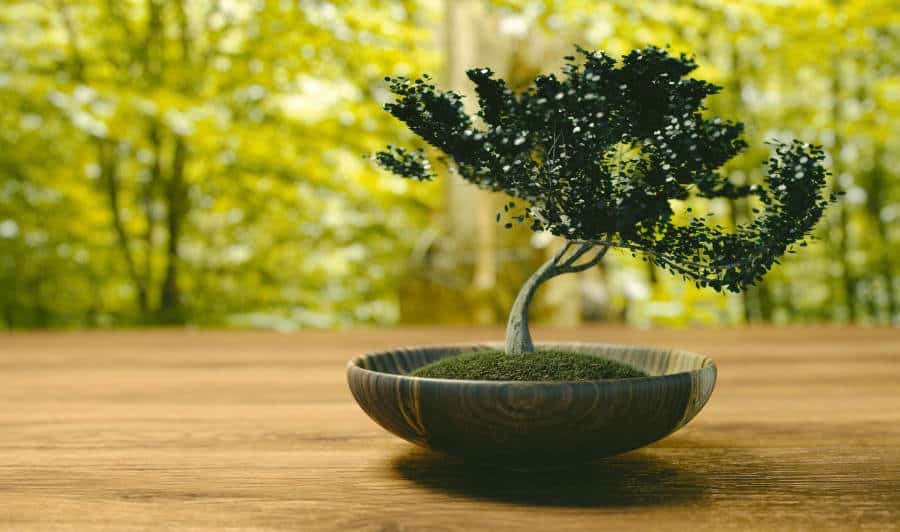
An important part of caring for bonsai trees is keeping them fed and watered. Knowing how much water to give your trees can be tricky, but at least most people know what water is. When it comes to fertilizer, the food supplements that we give our bonsai trees, it becomes much more confusing.
I’m going to have a look at what the various components of fertilizer are for and see if I can find out why bonsai trees need fertilizer.
So, what do you feed a bonsai tree? The main components of plant fertilizers are nitrogen, phosphorus and potassium. These elements are usually indicated by their chemical symbols: N, P and K, and a lot of the variation between fertilizers is due to their different proportions of these elements. Opinions vary, but the current advice for bonsai trees seems to be to feed them with a balanced fertilizer with equal proportions of the three main elements. Bonsai trees need fertilizer because they are grown in small pots, with limited amounts of soil, where these nutrients could easily become depleted.
It appears to be more complicated than that though. In addition to the proportions of the three elements, the actual amounts of the elements can vary too. And there are trace elements to consider. We’ll need to do some more digging to get an answer to the question.
Why Do Bonsai Trees Need Fertilizer?
While researching fertilizers for this article I found that there are different recommendations for different types of plant grown in different settings. A lot of the research on fertilizer and the effects chemical deficiency has been carried out on commercial crops.
Considering the large variety of plants grown in bonsai, this could make the choice of fertilizer more complicated as it’s hard to generalize.
What the Labels on Fertilizer Packaging Mean
The information on fertilizer packaging labels can be quite hard to understand. There are often three numbers separated by hyphens or slashes, and sometimes the letters N-P-K too.
The N refers to nitrogen, the P refers to phosphorus and the K refers to potassium. The three numbers mentioned refer to the amount of each of the three chemicals that the fertilizer contains.
An example would be fertilizer packaging displaying the numbers 5.5/6.5/3.5. In this case the fertilizer would contain 5.5% nitrogen, 6.5% phosphorus and 3.5% potassium.
You can see an example of bonsai fertilizer and the typical ingredients below:
There Is a Little More Complication
I read a little more on this and found out that while the percentage of nitrogen relates to the actual amount of the element nitrogen in the fertilizer, the phosphorus and potassium are combined with other chemicals into compounds.
Phosphorus is in the fertilizer as phosphorus pentoxide, P2O5, and the potassium as potassium oxide, K2O. So the numbers for the phosphorus and potassium related to the percentage of these compounds by weight in the fertilizer mixture rather than the actual phosphorus and potassium that it contains.
The really confusing thing about this is that nitrogen is often combined into chemicals too, ammonia and nitrate, for example. However, it’s still seems to be the amount of nitrogen rather than the amount of the compounds that appears on the label.
The more I looked into this, the more complex it seemed to become. In some countries the label even has to include the percentage amount of each element in the mix (nitrogen, phosphorus and potassium) together with the percentage amounts of each compound (N, P2O5 and K2O), which could make things even more confusing.
Why These Specific Fertilizer Components?
Having found out what the numbers on the fertilizer labels refer to, I wanted to know why fertilizer manufacturers seem to focus on these three chemicals: nitrogen, phosphorus and potassium.
When I tried to find out why these three chemicals are important for plant care in general I could only find very vague explanations like those below:
Nitrogen is needed for the growth and greening of leaves.
Phosphorus is needed for root growth and for flowers and fruit.
Potassium is needed for general plant health.
While I’m sure these general definitions are accurate, I wanted to find more specific information on what nitrogen, phosphorus and potassium are needed for, and why we have to provide them in the form of a supplement.
Why Do Bonsai Trees Need Nitrogen?
Even though more than three quarters of the air is nitrogen, plants can’t use this nitrogen directly from the atmosphere. Plants have to take up the nitrogen that they need through their roots, and it has to be available in a form they can use.
The nitrogen in fertilizers suitable for bonsai trees tends to be in the form of ammonium and nitrate compounds. It seems that nitrate can be absorbed and utilized by the plants a little faster, particularly in cold weather conditions. Plants need nitrogen to make a number of important chemical compounds.
Plants, like all living organisms, need to manufacture proteins. Proteins are made from chains of amino acids, and nitrogen is an important part of these amino acids. People can get these amino acids from the food that they eat. Plants have to make them themselves.
Plants also need to be able to make the DNA so that cells can divide and the plants can grow. The production of DNA also needs nitrogen, so nitrogen will be essential for healthy plant growth.
Chlorophyll is a compound that is unique to green plants. These plants use chlorophyll to help them combine carbon dioxide with water, trapping the sun’s energy, to make glucose. This process is called photosynthesis.
The plants use this glucose as a source of energy (and so do we when we eat the sugars stored by the plants).
Nitrogen is an important chemical needed for the production of chlorophyll. One of the earliest signs that plants are lacking in nitrogen is that the leaves aren’t as green as they should be, and can be yellowish in appearance. This will be due to a lack of chlorophyll in the leaves.
Why Do Bonsai Trees Need Phosphorous?
Phosphorus is essential for the production of proteins and DNA in the plant, which we already talked about when looking at the need for nitrogen. This means a phosphorus deficiency is likely to restrict plant growth.
I was a bit confused about the standard information I saw copied everywhere, saying that phosphorus was important for root growth. I found some research that said when plants are phosphorus-deficient they seem to favor root growth over shoot growth, so maybe that’s where this idea came from.
Phosphorus is also an essential component of ATP, which all living things use to provide energy for all processes inside their cells. A lack of phosphorus could limit the supply of energy available to the plants.
It’s also been found that phosphorus deficiency can limit the ability of plants to stay hydrated, possibly due to problems with taking up or retaining water.
One of the visible signs that plants could be phosphorus deficient is purple coloration in the leaves. This is due to a build up of a chemical called anthocyanin, which gives a lot of plants and vegetables their purple color. This could be due to a build up of carbohydrates inside the plant cells due to metabolic disruption caused by the phosphorus deficiency.
Why Do Bonsai Trees Need Potassium?
Although the concentration of potassium in soil can naturally be very low, plants accumulate potassium, which can make up between 2% and 10% of a plant’s weight. Potassium seems to be needed for several important processes in plants, including photosynthesis and control of water movement.
Plants that are deprived of potassium can have dramatically reduced levels of chlorophyll, resulting in dramatically reduced levels of photosynthesis (outlined above). This means the plants cannot produce the sugars required for energy and generation of other chemicals, which affects their growth.
Potassium is involved in the control of water movement in plants. An example of where this important is in the opening and closing of stomata in leaves. Gases like carbon dioxide and oxygen enter through the stomata, so disruption of this process can have widespread effects on plant health. Having an adequate supply of potassium has also been shown to help plants become more resistant to prolonged lack of water.
What About Trace Elements?
People mostly obtain trace elements from plant material in the diet. Plants have to obtain these trace elements from the soil, so fertilizers can (and normally do) provide a supply of these chemicals too.
Trace elements are usually metal ions, and these metals are needed to help enzymes to carry out the biochemical reactions in plants. Examples of these trace element metals include copper, iron, boron, manganese, molybdenum and zinc. An example of an essential non-metal trace element would be chlorine.
This article has become longer than I had intended, so I think I’ll come back to look at trace elements in more detail later.
Bonsai Trees May Need Fertilizer More Than Other Plants
Bonsai trees are often grown in very small pots so it would be very easy for the soil to become depleted of essential chemicals. While fertilizer can important for growing any type of plant, for bonsai trees providing an additional source of essential chemicals could be vital.
